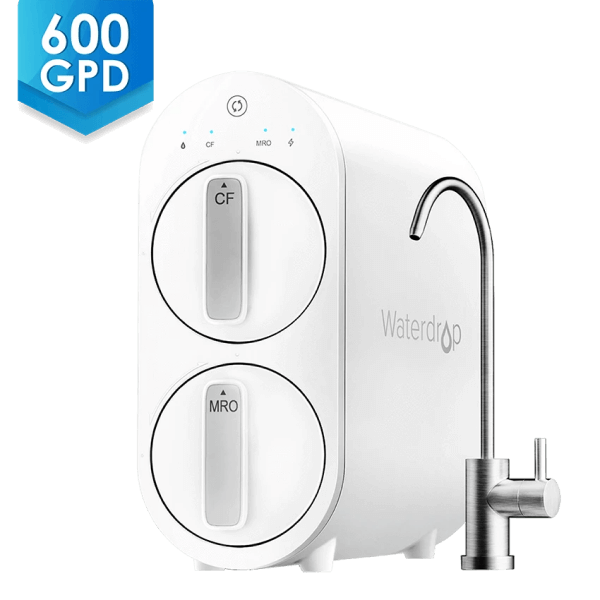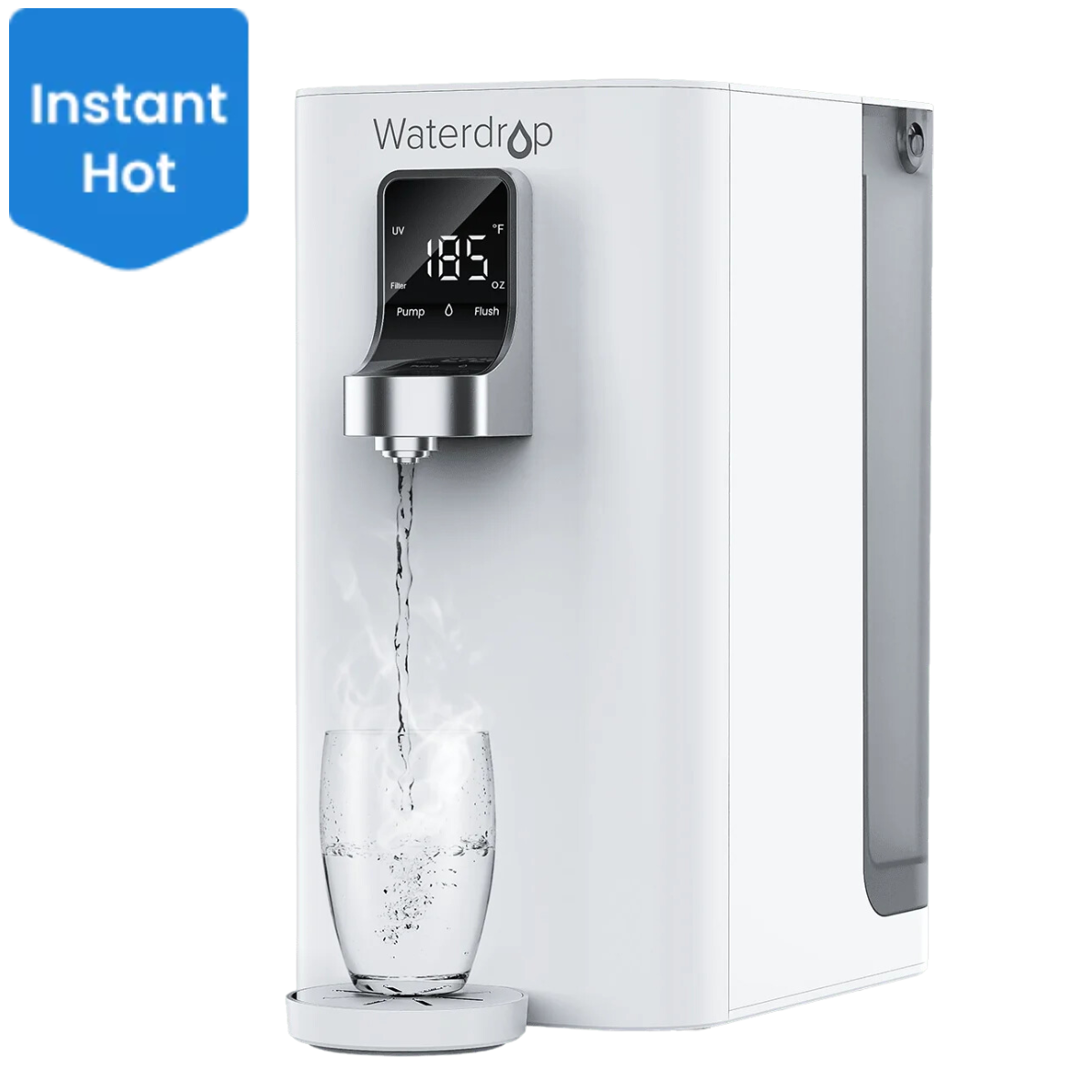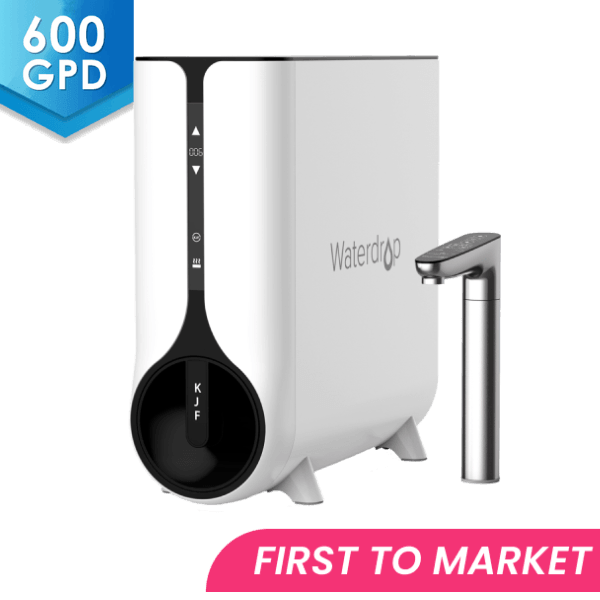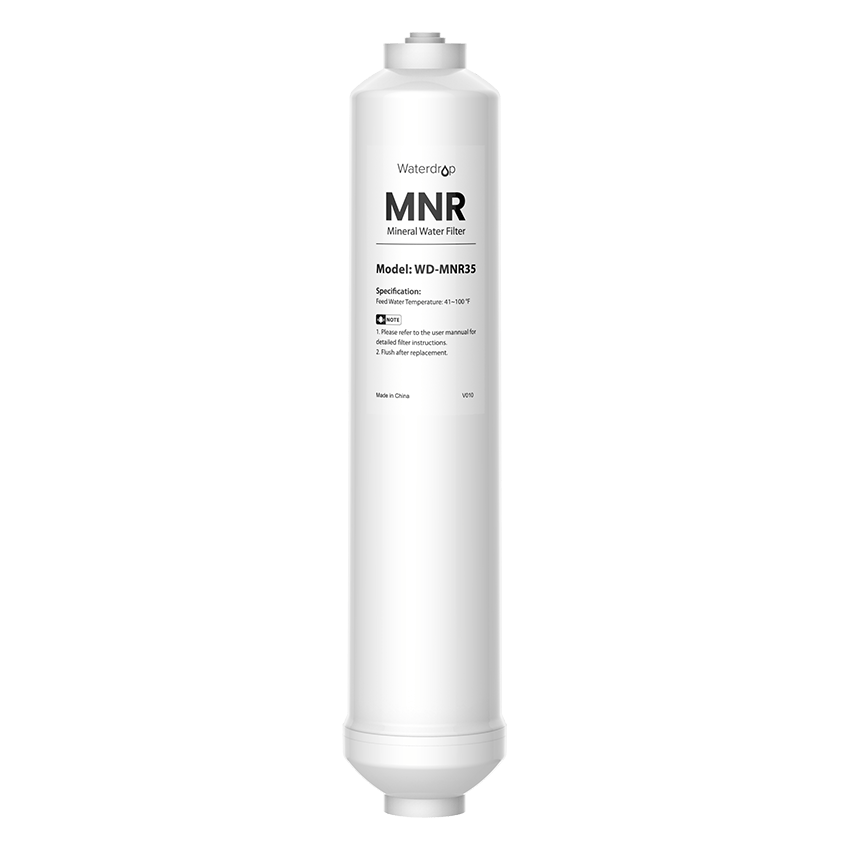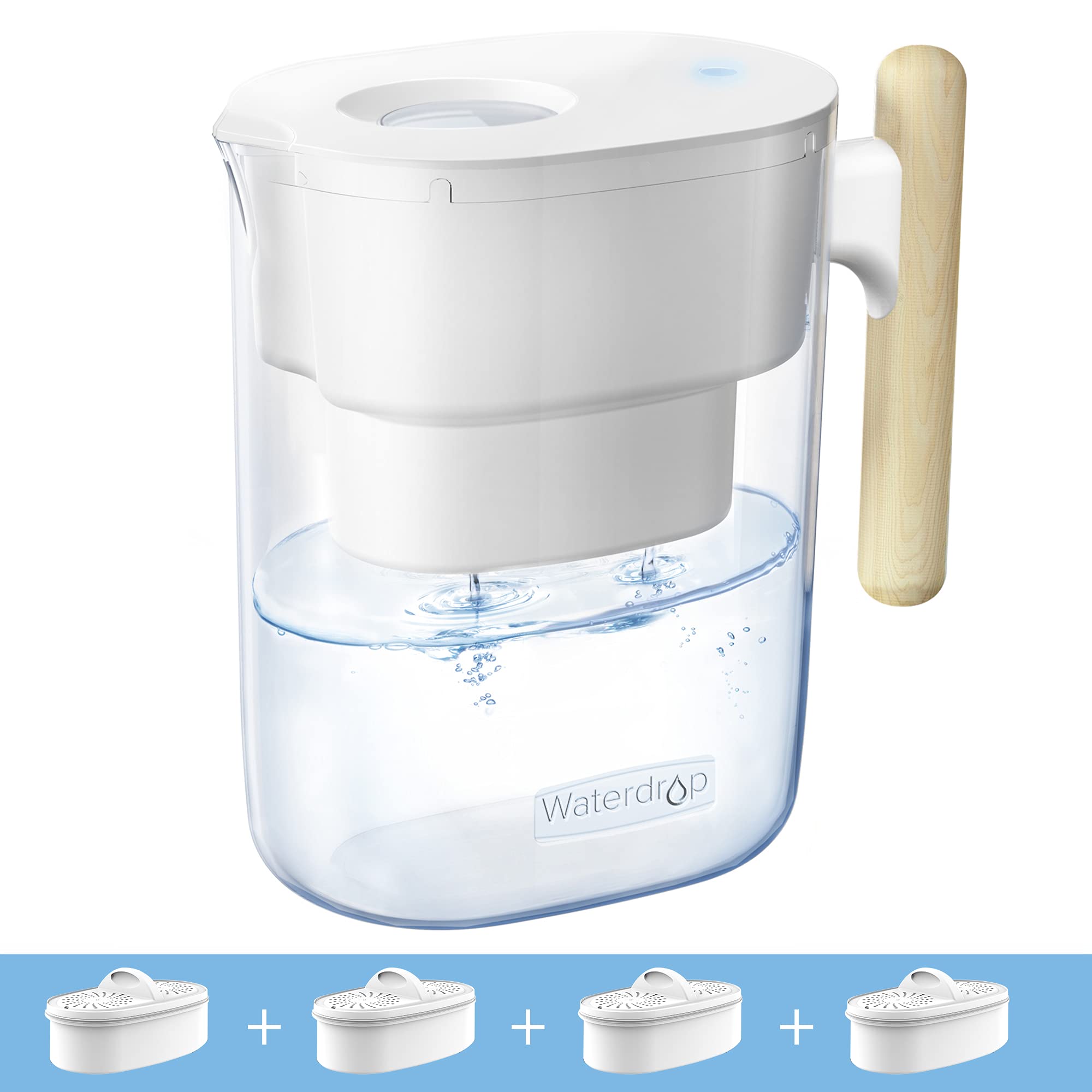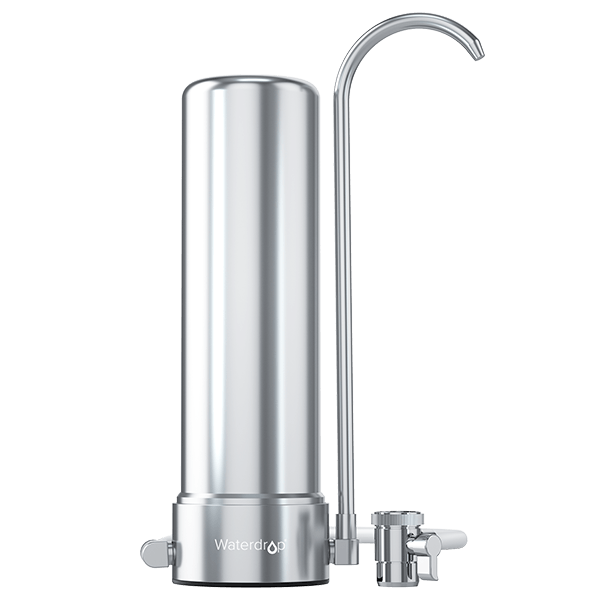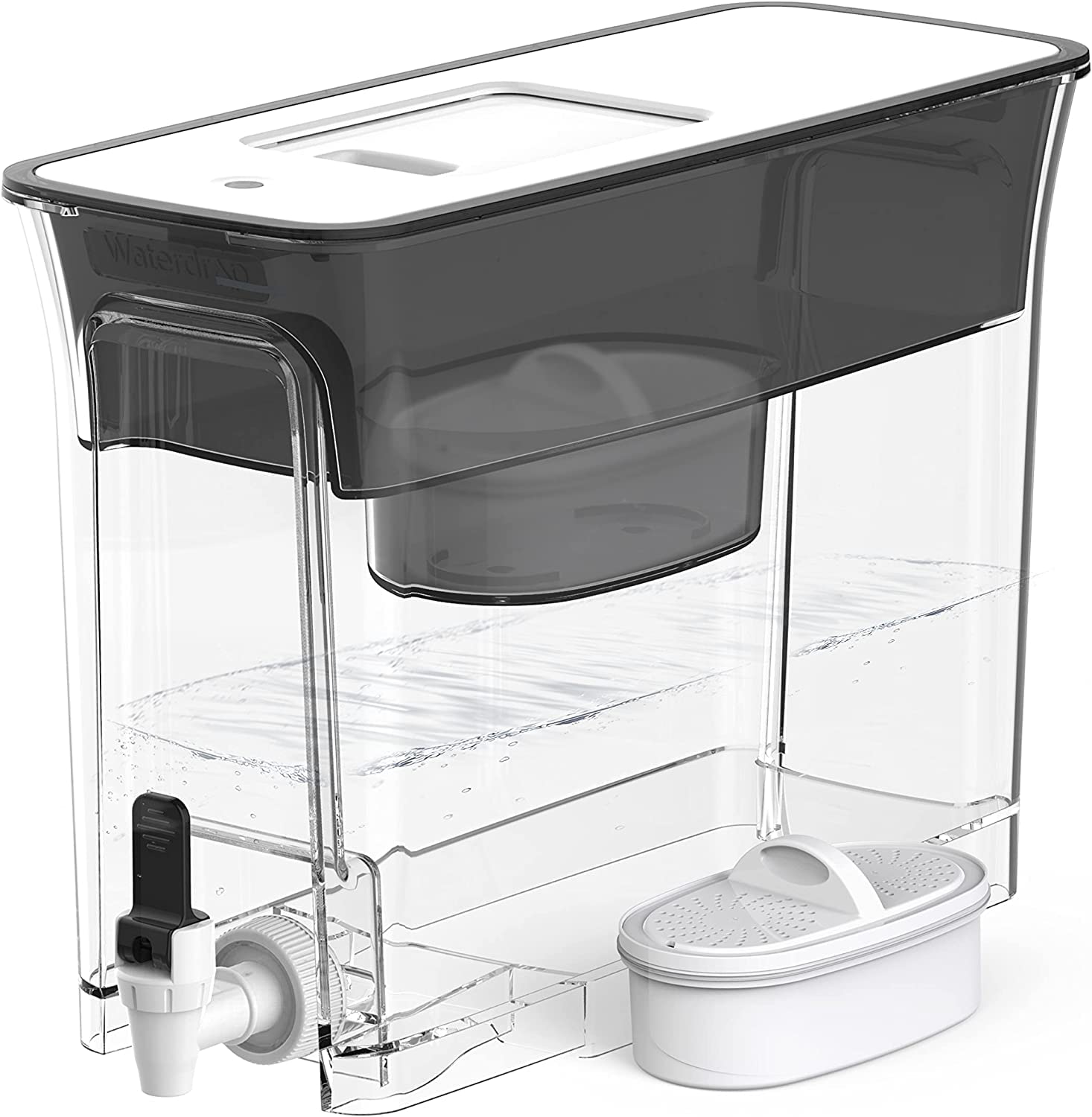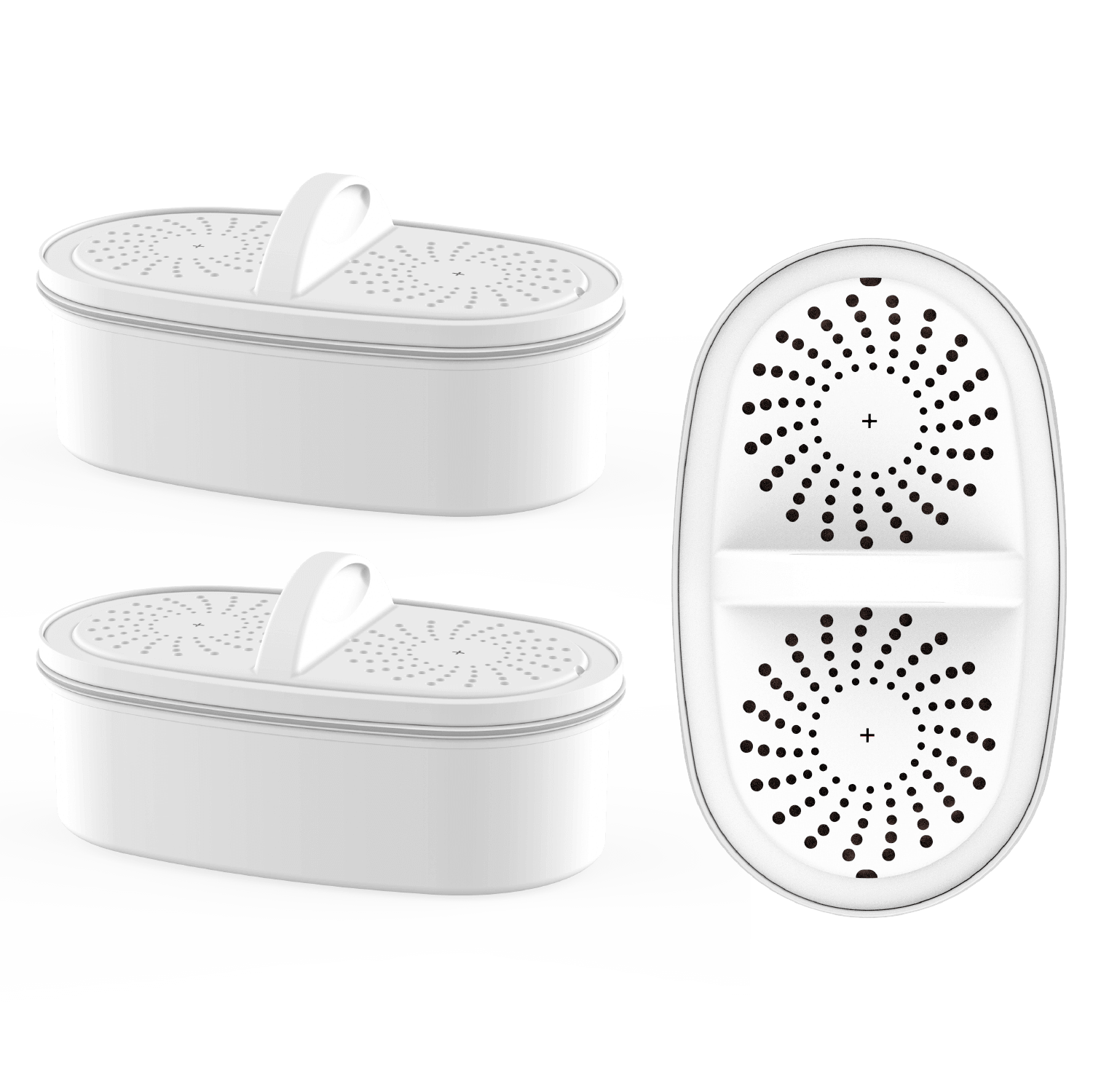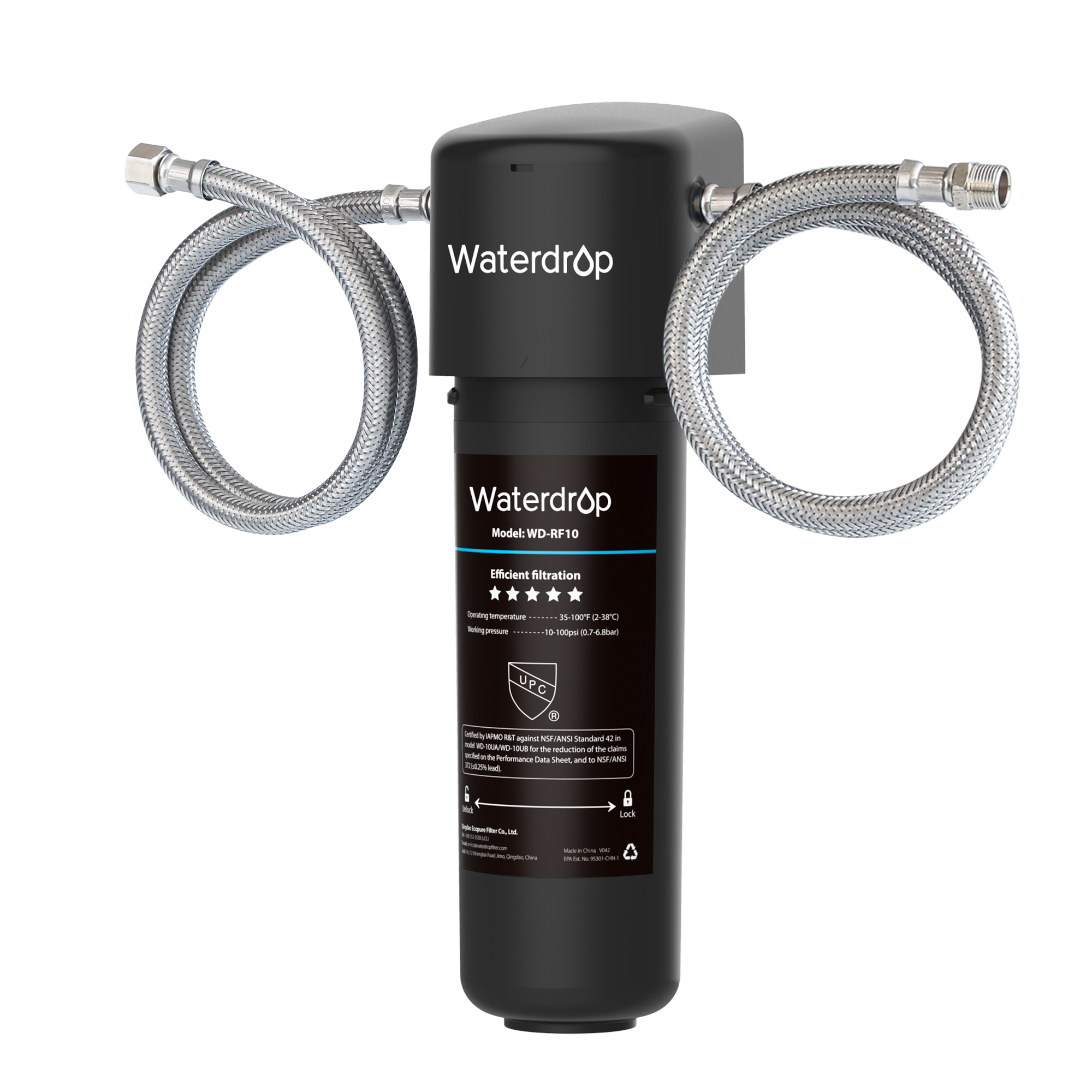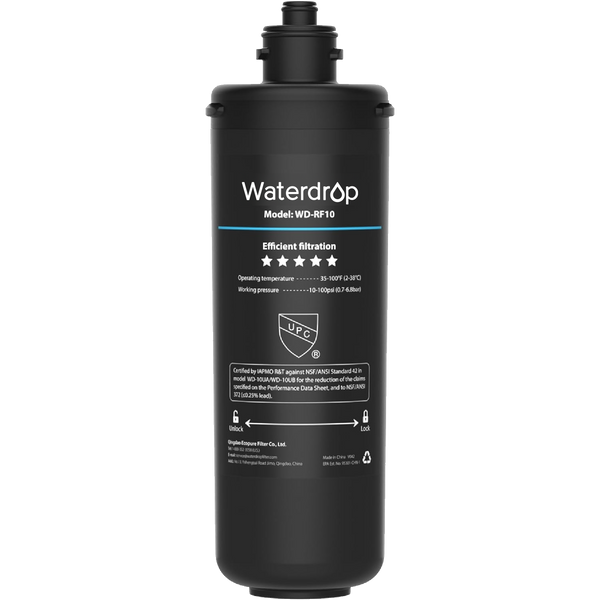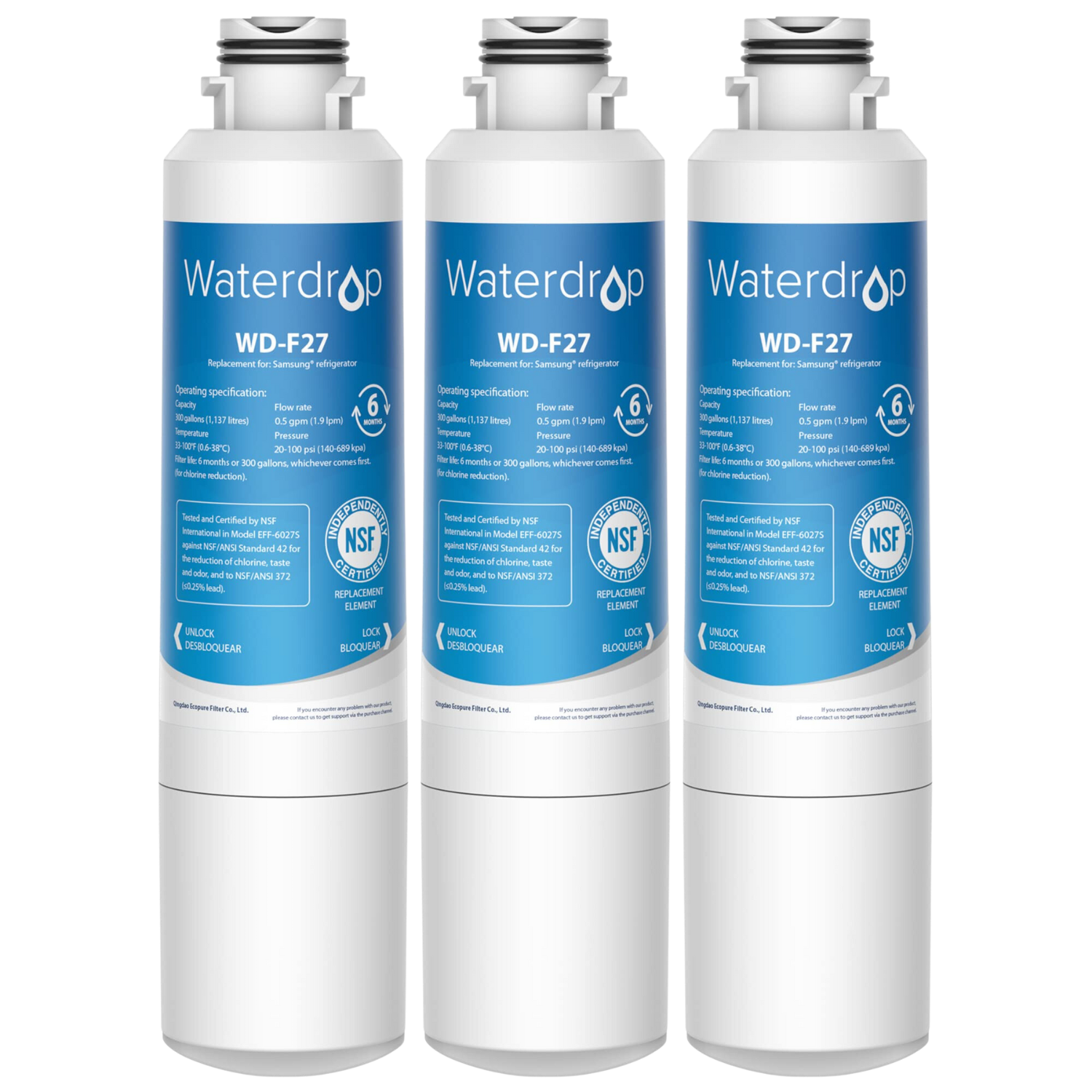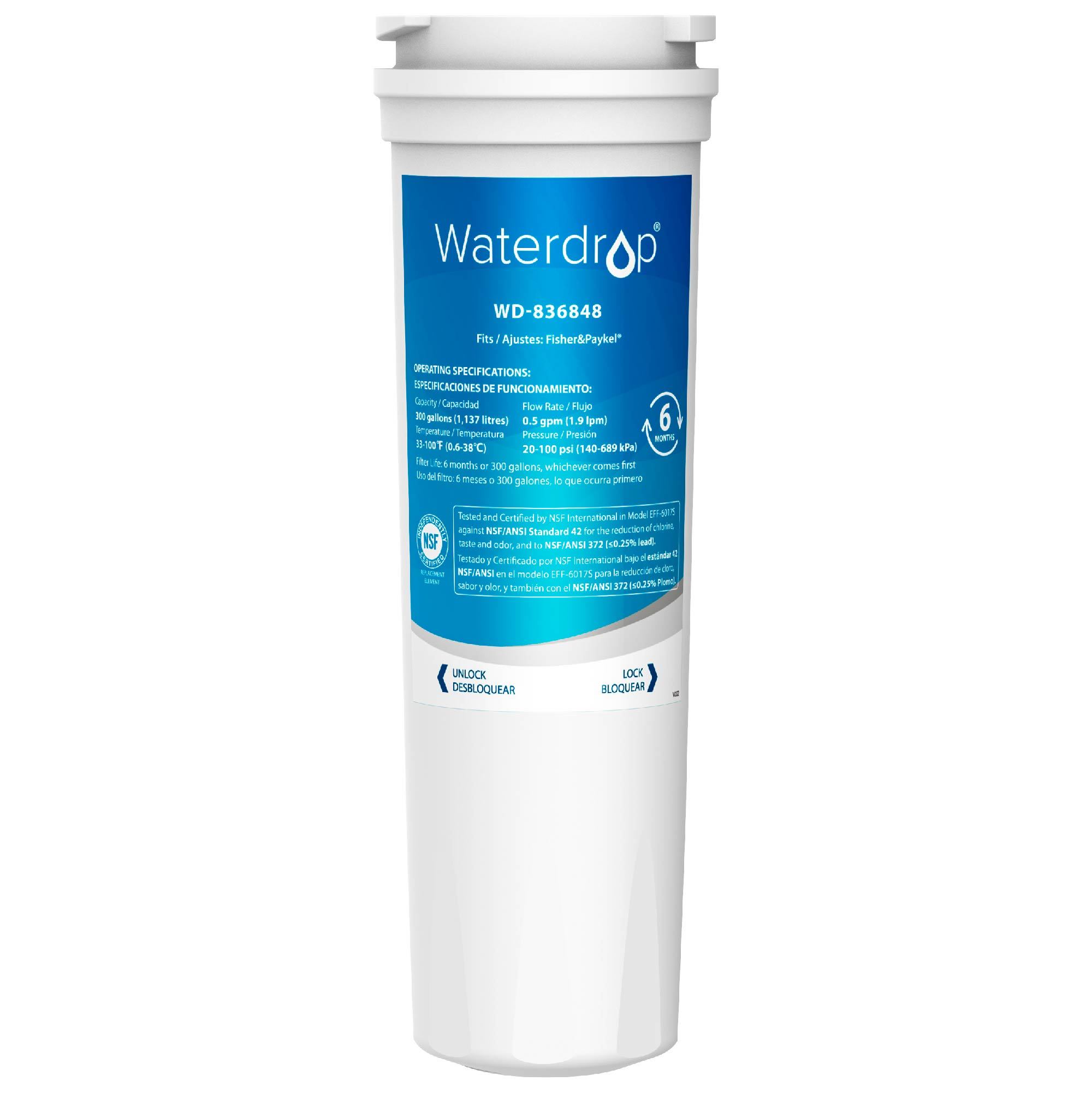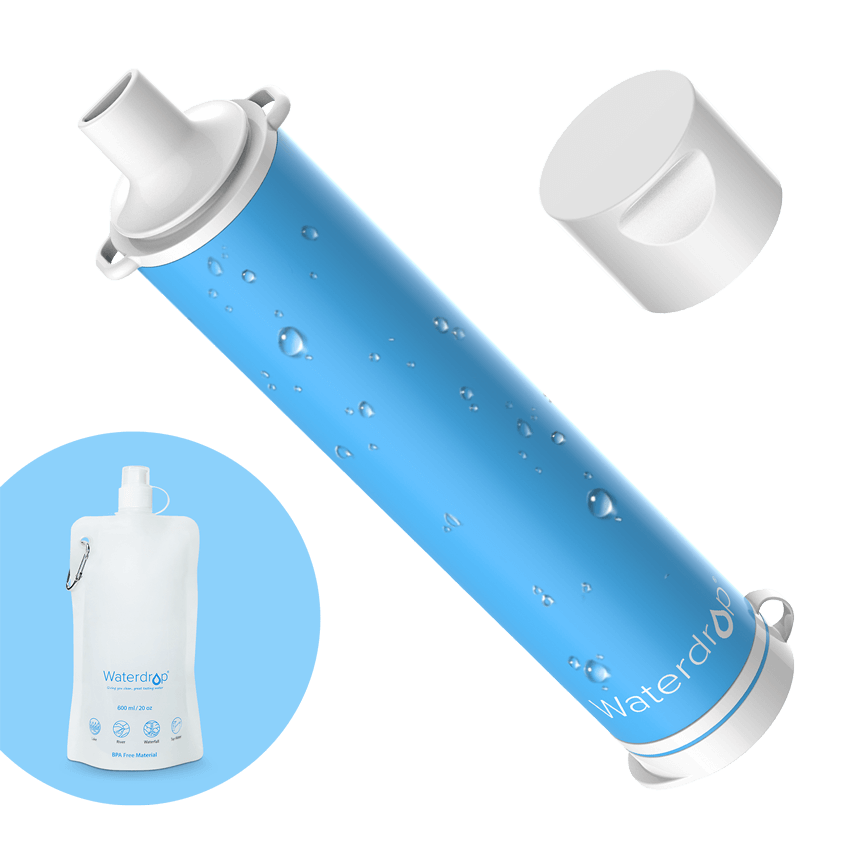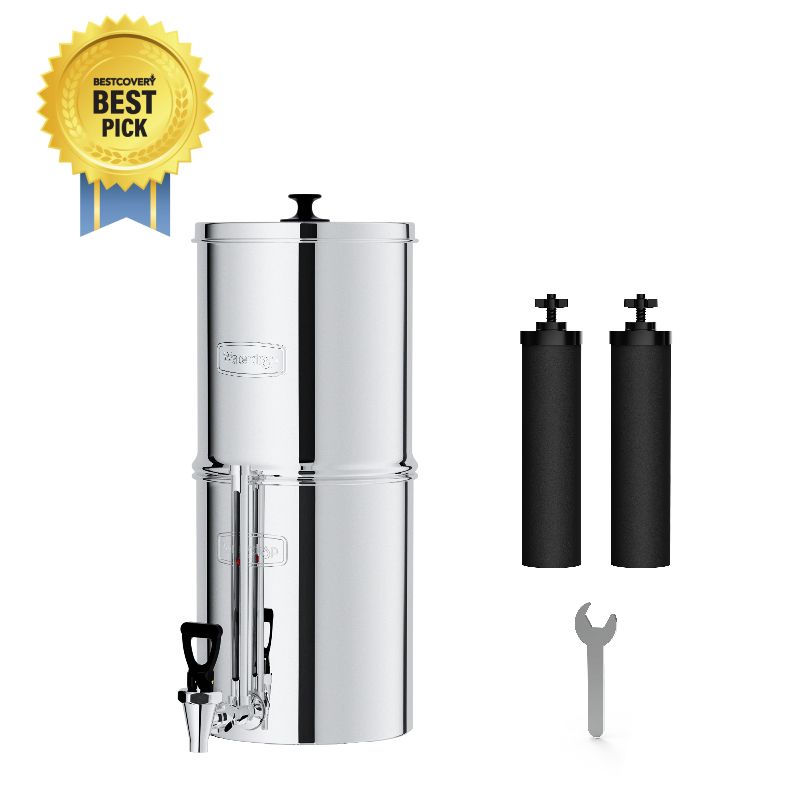Glossary of Water Terms
by Dr. Jonathan Doyle - Updated April 04, 2022
As an inorganic, odorless, nearly colorless, and transparent substance, water exists in three states: liquid, solid, and gaseous. At room temperature, water remains a liquid, however, at freezing it turns solid, and beyond 200 degrees Celsius it turns into a gaseous state. Water is a chemical element represented by the formula H20, and is comprised of one oxygen atom and two hydrogen atoms. Other substances, essential to life itself, also dissolve into water, regardless of the inherent lack of organic nutrients.
Understanding the terminology behind water is helpful in the response to water problems around the world. We have comprised a list of terms related to water, in an effort to help individuals, such as yourself, understand water better, as well as our website.
Glossary of Water Terms - A
Acidic water
Acidic water is water featuring pH level of 7 or less.
Alkaline water
Alkaline water is water featuring a pH level of 7 or higher.
Activated carbon
Produced via carbonaceous source materials, activated carbon may be comprised of coconut husk, bamboo, wood, willow peat, coir, petroleum pitch, coal, and more.
Arsenic
A highly toxic metalloid, levels of arsenic is commonly present in groundwater. This type of groundwater contamination features inorganic types of arsenic, due to various forms of pollution as well as natural deposits around the world.
Glossary of Water Terms - B
Backflow
As a plumbing term, backflow refers to the reverse flow of contaminated water via polluted water lines. Cross-connections are one of the main causes of backflow, especially in dishwashers, RO systems, and more.
Back pressure
When wastewater systems have more pressure than an incoming supply of fresh water, back pressure results. With the existence of problems within sewer lines, increased pressure may build up and cause back pressure. The most common source of back pressure comes from a decrease in pressure down the line.
Back siphonage
When negative pressure is created in the supply system, back siphonage may occur. Should there be an unexpected decrease in overall pressure, polluted sewer line water may be pulled back through the clean water line via back siphonage.
Bacteria
The term bacteria refers to groups of organisms and, in regard to water, is a main cause of illness, transmission of diarrhea, and more, through drinking.
Brackish water
Brackish Water has a pH level of 7 or higher. It is not strictly fresh or salt water, but is a type of water containing 0.5‰ - 30‰ salt. It’s salinity is higher than freshwater, and lower than saltwater, with brackish water occurring naturally throughout the environment.
Glossary of Water Terms - C
Ceramic filtration system
Utilizing tiny pores to filter bacteria, sediment, and more, out of drinking water, a ceramic filtration system is a common element of ceramic water filtration systems. This is one of the most affordable, versatile water filtration systems in existence, and offers a variety of installation methods. From households to portable filtration options, a ceramic filtration system is well worth the investment.
Chloramine
Chloramine is also known as secondary disinfection. This disinfectant may be used to treat drinking water sources, and has been used by water utilities as early as the 1930s. Over 1/5th of Americans utilize drinking water sources that have been treated with chloramine, among other treatment methods.
Chromium
Chromium occurs naturally in soil, rocks, plants, animals, and even volcanic dust, This odorless, tasteless metal is most commonly present in water as chromium-3 and chromium-6.
Copper
Copper is a beneficial mineral to humans and animals alike, especially when taken in the correct amount. In a large amount, though, water may cause bodily harm, which is why it may be categorized as a contaminant.
Glossary of Water Terms - D
Dehydration
Once your body begins to lose more fluid than it has taken in, dehydration occurs. This means your body will not have enough water to meet the demand of its normal bodily functions. For example, playing sports puts a tremendous demand on your body’s fluid resources, further highlighting the importance of remaining hydrated.
Deionized water
When water has been treated in an effort to remove ions, it is known as deionized water. This includes the removal of dissolved mineral salts, too, as opposed to simply distilled water.
Distilled water
When water is boiled into a vapor, before condensing back into a liquid via a separate container, distilled water plays a unique role. The original impurities that weren’t boiled off might remain in the original container, which produces a form of purified water unlike that of any other type of filtration device.
Glossary of Water Terms - E
EPA
EPA stands for the U.S. Environmental Protection Agency. It is an independent agency of the United States federal government responsible for maintaining the natural environment and protecting human health from environmental hazards and pollution.
Glossary of Water Terms - F
Fluoride
Fluoride is known to prevent tooth decay, as a naturally occurring mineral. Sometimes it is added into local water treatment facilities in an effort to decrease oral decay.
Glossary of Water Terms - G
Gallon
Gallon is a unit of liquid or dry capacity equal to eight pints or 4.55 litres.
GPD
GPD, or Gallons Per Day, refers to the unit of volume flow rate equal to a gallon flow for each individual day. A tool such as this converts gallons per day to gallons per hour and vice versa.
Gravity water filter
Gravity water filters are a great mode of water filtration, without the dependency of electricity. This unit utilizes two chambers to filter water efficiently from one chamber to another. During the use of such a water filter, water is poured into the upper chamber of the filter, before traveling into the lower chamber. This works through the use of gravity.
Groundwater
The water found underground is known as groundwater. It is found in the cracks of the earth, and other spaces within the rock, sand, and soil. This water is then stored, moving slowly throughout the formations known as aquifers.
Glossary of Water Terms - H
Hard water
Hard water is a common occurrence, and refers to water containing high levels of minerals, including calcium, water soluble magnesium, and more. In high amounts, these minerals can wreak havoc on your hair, and render shampoo useless – especially for scalp conditions.
Heavy metals
The term heavy metals refers to metals featuring a density greater than 4.5g/cm3, such as silver, iron, copper, gold, lead, cadmium, mercury, and more. As these heavy metals accumulate within the human body, they can lead to chronic poisoning at alarming levels. The term heavy metals is mainly in reference to heavy elements of significant biological toxicity within he realm of environmental pollutants.
Hydroponics
When plants are grown with water, sans soil or other growing medium, it is known as hydroponics. Many plants are grown through the use of hydroponics, including herbs, flowers, vegetables, and other fruit bearing plants. Certain types of inert growing media are utilized, in order to supply nutrients, alongside water, and oxygen.
Glossary of Water Terms - I
Iron
Iron exists naturally as a mineral, but may adversely affect portions of your body and health.
Glossary of Water Terms - K
Kilogram
Kilogram is a unit of mass.
Glossary of Water Terms - L
Lead
As a naturally occurring element, lead is found within the earth’s crust in small amounts. Although it may be slightly beneficial, lead is toxic to humans and animals in small amounts. Consumption results in adverse health effects with severe consequences.
Glossary of Water Terms - M
Mineral water
Mineral water contains large numbers of gases or dissolved minerals. When found in naturally occurring sources, mineral water is found to contain high levels of potassium, magnesium sulfate, calcium carbonate, and more.
Glossary of Water Terms - N
Nitrate
Well owners are commonly faced with eliminating contaminants such as nitrates. This naturally occurring compound is found within the earth, especially in high levels of agricultural communities, rural towns, and much more.
Glossary of Water Terms - O
Ozone water
This type of water is free of bacteria, fungi, parasites, and viruses. Ozone wateris processed and purified through the sterilization process of ozone, to produce purified drinking water.
Glossary of Water Terms - P
PFAS
A group of human-made chemicals resistant to oil, heat, and water, PFAS refer to the Per- and Polyfluorinated substances.
PH
The pH level of water is an indication of how acidic or basic it is, and can measure anywhere between 0 to 14. A pH of 7 is considered a neutral level.
Pressure tank
A pressure tank plays a vital role to the process of reverse osmosis, connecting your system to a refrigerator, ice maker, and more.
Purified water
Water that has been treated through a water treatment system is known as purified water. The process works to remove various impurities from many different water sources.
Glossary of Water Terms - R
Rain barrels
Rain barrels are one of the most economical and common methods of storing harvested rainwater. Within a rainwater harvest system, barrels are placed below downspouts in order to collect rainwater as it flows from various structures.
Rainwater harvesting
Rainwater harvesting involves the storage and collection of rain for a later date, save for uses such as bathing, irrigation, and even drinking (once properly filtered or purified). Rainwater is collected from run-off structures, including rooves, storing for use at a later date.
Remineralized water
An effective way to make purified water easier and more beneficial to the human body involves the remineralization process. Reverse osmosis technology, for example, is such an effective mode of water filtration, that it strips away essential nutrients, minerals, and salts, from the water. Remineralized water has beneficial minerals added back to the purified water once the process of reverse osmosis is complete.
Reverse osmosis
Reverse Osmosis is the technology used to remove most contaminants from a variety of water sources. It uses pressure to force water through a semi-permeable membrane, to produce some of the safest purified water possible.
Reverse osmosis membrane
A reverse osmosis system utilizes a membrane with a pore size of 0.0001 microns minimum. This enables it to remove a whole slew of contaminants from a variety of water sources.
Glossary of Water Terms - S
Sediment filter
Sediment filters are capable of capturing and removing dirt, debris, and other particulate matter from household drinking water. A term such as sediment is a generic word encompassing the solid particulate matter commonly found in water sources.
Softener
A device, or substance, utilized to remove minerals, including chalk, and more, from drinking water are known as a softener.
Soft Water
When water does not contain minerals such as magnesium, calcium, and more, it is referred to as soft water.
Sulfur
Occurring naturally, sulfur is found around the world as common sulfide and sulfate. These two types of sulfate are commonly found in tap water in even the most civilized countries.
Sulfur Smell
Glossary of Water Terms - T
Tap water
Tap water is also known as running water, municipal water, and faucet water. This water is supplied via household taps, otherwise known as water dispenser valves. Your household tap water is used for cooking, drinking, toilet flushing, and washing.
TDS
TDS is also known as Total Dissolved Solids, representing the total concentration of water-based dissolved substances. This term is used to describe inorganic salts, small amounts of organic matter, and other elements present in water sources.
Glossary of Water Terms - U
Ultrafiltration
Ultrafiltration (UF) utilizes home water pressure to physically filter water via semipermeable membranes. This process of water filtration rids residential water sources of large particles within a specific pore size.
Ultrafiltration membrane
During the filtration process, the ultrafiltration membrane utilizes hollow fibers within a pore size of 0.01 to 0.1 micron.
UV sterilization
The UV sterilization technology is used to kill off viruses and bacteria found in water. The use of a UV light enables sterilization through electromagnetic radiation with long that are considerably shorter than sunlight. UV light is even categorized into different wavelengths, such as UV-C, known as germicidal UV, a short-wavelength UV light.
Glossary of Water Terms - V
VOCs
VOCs, also known as volatile organic compounds, are organic chemicals featuring a low boiling point. When VOCs are exposed to normal air temperatures, they turn into vapors and gases, readily. Their volatility refers to an ability for VOCs to convert to gas in temperatures below freezing, and more.
Glossary of Water Terms - W
Water infrastructure
Water infrastructure helps locals break away from poverty, making way for advancement. In fact, water infrastructure refers to the system of water storage, water treatment, water supply, management, and more.
Water pressure
The force that pushes water through pipes, membranes, and more is known as water pressure. This determines the flow of water from the point of origin, such as the faucet. The level of pressure is dependent upon how high the water tower or service reservoir is above your place of residence, as well as the amount of water being utilized by other customers in the same service area.
Water transmitted viruses
Viruses in water sources can make you very sick, regardless of where you find yourself in the world. A water transmitted virus refers to waterborne viruses, which are spread through swimming, washing, drinking, and even eating.
Well water
When you live in a home with a well, you may be enjoying well water. This means you might cook, bathe, and drink well water, throughout your household. If this private well is found on your own personal property, it means you are solely responsible for the maintenance and repair of such a structure. This encompasses regular water checks to ensure the water meets drinking standards.
Whole house water filter
A whole house water filter features an integrated water filtration system capable of improving the water environment and drinking water of your entire household. This type of water filter device is capable of purifying water sources from the point of entry, supplying filtered water to every faucet and tap around your home.


